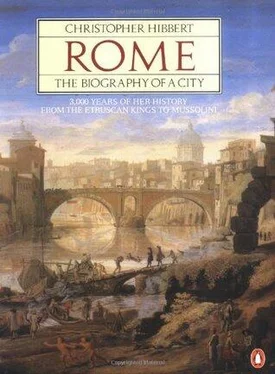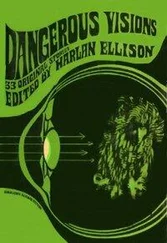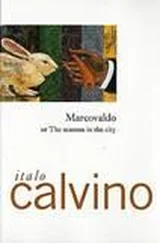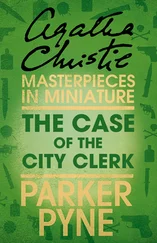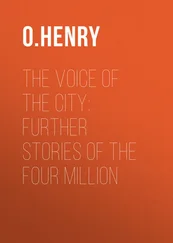Christopher Hibbert - Rome. The Biography of the City
Здесь есть возможность читать онлайн «Christopher Hibbert - Rome. The Biography of the City» весь текст электронной книги совершенно бесплатно (целиком полную версию без сокращений). В некоторых случаях можно слушать аудио, скачать через торрент в формате fb2 и присутствует краткое содержание. Жанр: Культурология, Искусство и Дизайн, на английском языке. Описание произведения, (предисловие) а так же отзывы посетителей доступны на портале библиотеки ЛибКат.
- Название:Rome. The Biography of the City
- Автор:
- Жанр:
- Год:неизвестен
- ISBN:нет данных
- Рейтинг книги:3 / 5. Голосов: 1
-
Избранное:Добавить в избранное
- Отзывы:
-
Ваша оценка:
- 60
- 1
- 2
- 3
- 4
- 5
Rome. The Biography of the City: краткое содержание, описание и аннотация
Предлагаем к чтению аннотацию, описание, краткое содержание или предисловие (зависит от того, что написал сам автор книги «Rome. The Biography of the City»). Если вы не нашли необходимую информацию о книге — напишите в комментариях, мы постараемся отыскать её.
Rome. The Biography of the City — читать онлайн бесплатно полную книгу (весь текст) целиком
Ниже представлен текст книги, разбитый по страницам. Система сохранения места последней прочитанной страницы, позволяет с удобством читать онлайн бесплатно книгу «Rome. The Biography of the City», без необходимости каждый раз заново искать на чём Вы остановились. Поставьте закладку, и сможете в любой момент перейти на страницу, на которой закончили чтение.
Интервал:
Закладка:
20. The name of S. PIETRO IN VINCOLI first appeared in the time of Pope Symmachus (d. 514) but it was not until the year 1000 that it was commonly used. The chains were said to have bound St Peter when he was a prisoner of King Agrippa I in Jerusalem and miraculously escaped, as recounted in Acts xii, 1–13. They were given by the Empress Eudoxia, wife of the Eastern Emperor Theodosius II, to their daughter, also called Eudoxia, who was married to the Emperor of the West, Valentinian III. Over the fabric of an earlier church, Pope Sixtus III (432–40), with the help of the younger Eudoxia, raised a new church which, to begin with, was dedicated to the Apostles. Sixtus IV (1471–84) rebuilt the church and Pope Julius II (1503–13) radically restored it. It was again restored and embellished by Pius IX on the occasion of his Jubilee. The church contains Michelangelo's of Moses. The chains are preserved in a reliquary under the high altar. There is a fine fourth-century sarcophagus in the confessio behind the altar.
21. The original BASILICA OF SS. JOHN AND PAUL ON THE CAELIAN was raised by one Pammachius, a friend of St Jerome and Senator, possibly in the pontificate of Pope Damasus (366–84). The church is thought to have suffered damage during Alaric's sack of Rome in 410, but it was soon restored. Further additions and repairs were carried out in the eleventh and twelfth centuries and again extensively from 1948 to 1952.
22. Gaius Sallustius Crispus (86- c . 34 B.C.) was a Roman politician and historian who acquired great wealth as Proconsular Governor of Numidia in Africa and was able to purchase an estate near Porta Pinciana, between the Quirinal and Pincian hills. Here he built the SALLUST PALACE or Villa and laid out gardens which became famous as the Horti Sallustiani . The remains of the palace can still be seen below street level in the middle of Piazza Sallustio. Sallust spent the rest of his life there in retirement writing history.
23. S. SABINA ON THE AVENTINE was founded by a priest, Peter of Illyria, and was built between 422 and 432 on the property of a Roman matron, Sabina, who was later identified with the Umbrian saint. It stands in a commanding position overlooking the Tiber. In 824 Pope Eugenius II added the schola cantorum , the ambones (pulpits) and the ciborium. In 1222 the church was handed over to St Dominic by Pope Honorius III and it has been held by the Dominicans ever since. It was very well restored in 1936–8 when the ancient windows with their selenite panes, which had been walled up, were reopened. There are a number of fine frescos by the Zuccaro brothers, Federico and Taddeo. The adjoining monastery was founded by St Dominic in 1220.
24. The fourth of the patriarchal basilicas, after ST JOHN LATERAN, ST PETER'S and ST PAUL'S, S. MARIA MAGGIORE was built on the Esquiline hill where a cult of the mother goddess, Juno Lucina, had been based. When, following the Council of Ephesus which promoted veneration of the Virgin Mary as Mother of God, Pope Sixtus III (432–40) decided to build a basilica in her honour, this obviously seemed a suitable spot. The church, with its splendid classical columns lining the nave, displays, more than any other in Rome, the striking contrast between its classical origin and its Baroque additions. With most, however, the classical aspect is outside and the Baroque within. Here it is the reverse. The fifth-century mosaics along the walls above the architrave, and those surrounding the high altar, are among the finest treasures of the basilica. There is also a marvellous Cosmatesque pavement. The Renaissance ceiling is believed to have been gilded with the first gold brought from America. The statue of Pope Paul IX kneels before a reliquary containing pieces of wood and metal bands which are traditionally supposed to have formed part of Christ's crib. Nicholas IV (1288–92) rebuilt the apse, Clement X (1670–76) the façade at the rear, and Benedict XIV (1740–58) the front, to the designs of Ferdinando Fuga. The campanile is of 1377 and, at 75 metres, the highest in Rome.
25. S. STEFANO ROTONDO is one of the oldest churches in Italy to have been built on a circular plan. It was once thought that its shape was imposed upon it by its being constructed upon the curve of one of Rome's markets, the Macellum Magnum, which was erected in the time of Nero. It is, in any case, likely that it had been built on an earlier foundation when it was consecrated by Pope Simplicius (d. 483) and dedicated to St Stephen whose cult was already widespread in Rome. The church is entered by a portico with five arches added by Pope Innocent II (1130–43). At the end of the sixteenth century the enclosing wall was frescoed with a series of gruesome paintings of the tortures of a number of well-known martyrs. One of the chapels which surround the church contains a marble seat said to have been the episcopal throne of St Gregory the Great.
26. The church of S. GIORGIO IN VELABRO probably dates back to the sixth century. It was rebuilt by Pope Leo II (682–3) and completely restored in 1926 when it was freed from its Baroque accretions. The Romanesque tower and the portico are of the twelfth century. The Velabro ( Velabrum ) is the flat land between the Capitol and Palatine hills and the Tiber. It was originally a swamp, drained by the CLOACA MAXIMA, which became one of the busiest centres of the city. According to Plautus in his play Curculio , it was the meeting-place of bakers, butchers, fortune-tellers and dancers. From the FORUM, the Vicus Jugarius and the Vicus Tuscus led to the river across the Velabro.
27. The Via Lata was the main road running north and south through Rome during the Middle Ages. It followed the urban sector of the ancient Via Flaminia leading to the Porta Flaminia. Its track is now followed by the Corso. A first church, dedicated to S. Siricius who was Pope from 384 to 399, was built by Pope Sergius III (904–11), on the site of the SAEPTA JULIA where one of the earliest diaconiae had been established. This first church was replaced by the present Basilica of S. MARIA IN VIA LATA which was erected by Pope Leo IX ( 1048–54). That, in turn, was almost entirely rebuilt by Pope Innocent III (1484–92) towards the end of the fifteenth century. Pietro da Cortona (1658–62) designed the façade.
28. The church of ss. COSMA E DAMIANO, which was built in 527 into the remains of Vespasian's Forum of Peace, was dedicated to the two saints, doctors martyred in Syria, whose cult became widespread in the fifth century. The sixth-century mosaic in the apse is one of the earliest and most exquisitely fashioned in Rome. Part of it was restored in the seventeenth century by the Barberini Pope, Urban VIII, the bees of whose coat of arms can be seen in the left-hand corner.
29. S. MARIA ANTIQUA, the oldest church in the FORUM, was rebuilt by Pope John VII (705–7) and embellished by Pope Zacharias (741–52) and Pope Paul I (757–67). The church was abandoned after an earthquake; and in the thirteenth century a new church, dedicated to S. Maria Liberatrice, was built on its ruins. This was demolished in 1902 when work was begun on the restoration of S. Maria Antiqua to its original state. The rare eighth-century frescos are very probably the work of refugees from the iconoclastic persecution in the Eastern Church.
30. The church of S. MARIA AD MARTYRES, later to be known as S. MARIA ROTONDA, was consecrated in the PANTHEON in 609 as the church of St Mary and all the Saints and Martyrs. (For the Pantheon see note 16, Chapter 3.) Twenty-eight wagonloads of martyrs' bones were brought here from the catacombs by Pope Boniface IV.
31. The church of S. ADRIANO was deconsecrated in 1937 and the building restored as it had been when it was reconstructed by Diocletian after a fire in 289.
Читать дальшеИнтервал:
Закладка:
Похожие книги на «Rome. The Biography of the City»
Представляем Вашему вниманию похожие книги на «Rome. The Biography of the City» списком для выбора. Мы отобрали схожую по названию и смыслу литературу в надежде предоставить читателям больше вариантов отыскать новые, интересные, ещё непрочитанные произведения.
Обсуждение, отзывы о книге «Rome. The Biography of the City» и просто собственные мнения читателей. Оставьте ваши комментарии, напишите, что Вы думаете о произведении, его смысле или главных героях. Укажите что конкретно понравилось, а что нет, и почему Вы так считаете.
